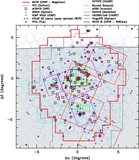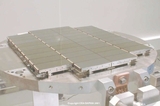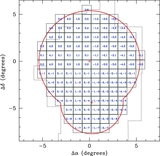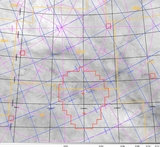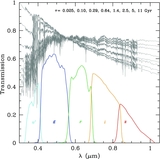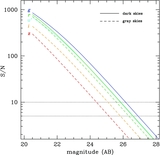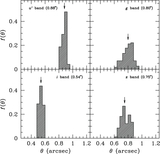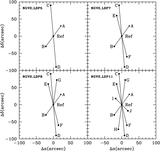Image Details
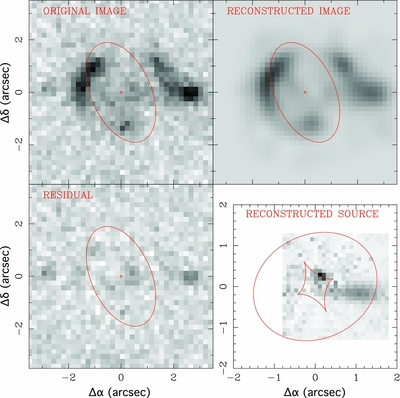
Caption: Figure 28.
Example of a strong-lensing event detected in the NGVS. Clockwise from the upper left corner, the panels show the (a) original
image with the foreground deflector subtracted; (b) image plane model; (c) residual image; and (d) source plane model for
the reconstructed source. This analysis gives a best-fit Einstein radius of ≈1
![]() 51. The photometric redshift of the deflector is
z ~ 0.6, which, for an assumed redshift of
z ~ 1.5 ± 0.5 for the background source, implies a deflector velocity dispersion of σ ~ 320 ± 30 km s
−1. The NGVS is expected to uncover ~200 such strong-lensing events.
51. The photometric redshift of the deflector is
z ~ 0.6, which, for an assumed redshift of
z ~ 1.5 ± 0.5 for the background source, implies a deflector velocity dispersion of σ ~ 320 ± 30 km s
−1. The NGVS is expected to uncover ~200 such strong-lensing events.
Copyright and Terms & Conditions
© 2012. The American Astronomical Society. All rights reserved.



